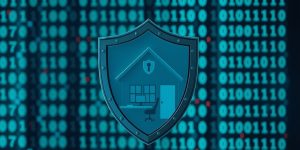In today’s digital age, website security is of utmost importance for small and medium-sized enterprises (SMEs). Cyber breaches can have devastating consequences for businesses, leading to financial loss, damage to reputation, and loss of customer trust. To help SMEs protect their websites from potential threats, we have compiled a list of 10 essential website security tips. By implementing these measures, SMEs can significantly reduce the risk of security breaches and ensure the safety of their online presence.
Key Takeaways
- Implement strong user authentication measures such as secure passwords, two-factor authentication, and biometric authentication.
- Secure website communication by using HTTPS for data transfer, implementing SSL/TLS certificates, and protecting against man-in-the-middle attacks.
- Regularly update and patch your website’s software to fix vulnerabilities and automate the update process.
- Implement web application firewalls to protect against common attacks like SQL injection and cross-site scripting.
- Perform regular security audits, identify vulnerabilities, and conduct penetration testing to ensure the robustness of your website’s security.
Understanding the Importance of Website Security
The Risks of Inadequate Website Security
Businesses are increasingly reliant on web-based platforms for their operations, communication, and customer interactions. While this technological shift has brought convenience and efficiency, it has also opened the floodgates to a myriad of cyber threats – many no longer just centred on email-based breaches. As the digital realm expands, the need for robust web-based security becomes paramount for businesses of all sizes due to the escalating frequency and sophistication of cyberattacks. Hackers are becoming more adept at exploiting vulnerabilities, often targeting sensitive data.
Incidents can shatter the perception of a business as a reliable custodian of sensitive information, leading to a loss of clientele and tarnished brand image. To address these challenges, businesses need to invest in cutting-edge web security solutions. These include regularly updating software and systems, implementing multi-factor authentication, encrypting sensitive data, and conducting regular security audits. Collaborating with cybersecurity experts and staying abreast of the latest threats intelligence is equally crucial in maintaining a proactive defense against emerging threats.
Sales, using a trusted partner like Shopify, Squarespace, etc., is a great way to check these boxes as these are reputable firms that take security seriously, which helps to offload the risk to someone else, albeit at a cost. Q. Are smaller businesses more susceptible to potential attacks than larger ones? A. Sadly yes. While news headlines often focus on bigger named companies getting hacked and having to pay ransoms, the reality is that hundreds of smaller companies are getting hacked each day and not making headlines because they’re just not big enough to report on, or they’re too scared to report.
The consequences of a successful cyberattack can be devastating, ranging from financial losses and reputational damage to legal repercussions. These security breaches can erode customer trust and a single security incident can shatter the perception of a business as a reliable custodian of sensitive information, leading to a loss of clientele and tarnished brand.
Common Website Security Threats
Common website security threats can pose significant risks to businesses. It is important for SMEs to be aware of these threats and take appropriate measures to protect their websites and sensitive data. Here are some common website security threats:
- Malware Infections: Malware, such as viruses and ransomware, can infect websites and compromise their functionality and security.
- Phishing Attacks: Phishing attacks involve fraudulent emails and websites that trick users into revealing sensitive information, such as passwords and credit card details.
- Cross-Site Scripting (XSS): XSS attacks exploit vulnerabilities in websites to inject malicious scripts, which can lead to unauthorized access and data theft.
- SQL Injection: SQL injection attacks target websites with vulnerable databases, allowing attackers to manipulate or extract sensitive data.
To mitigate these threats, SMEs should implement robust security measures, such as regularly updating software, using strong passwords, and educating employees about phishing awareness. It is also important to monitor website traffic and implement firewalls to detect and prevent potential attacks.
Consequences of a Security Breach
The consequences of a successful cyberattack can be devastating, ranging from financial losses and reputational damage to legal repercussions. These security breaches can erode customer trust and a single security incident can shatter the perception of a business as a reliable custodian of sensitive information, leading to a loss of clientele and tarnished brand image.
To address these challenges, businesses need to invest in cutting-edge web security solutions. These include regularly updating software and systems, implementing multi-factor authentication, encrypting sensitive data, and conducting regular security audits. Collaborating with cybersecurity experts and staying abreast of the latest threats intelligence is equally crucial in maintaining a proactive defense against emerging cyber threats.
In order to mitigate the risks associated with a security breach, it is important for SMEs to understand the importance of cybersecurity risk management. Here are some key reasons why cybersecurity risk management is essential for SMEs:
- Financial Impact: Even if you think you can afford a breach, your cash flow will be impacted significantly as you grapple with system and data recovery costs.
- Regulatory Compliance: Depending on the nature and severity of a breach, you may be subject to significant regulatory fines. Customers may also bring a class action lawsuit against you. Preparing properly for cyber threats can protect your organization from these outcomes.
- Reputation Protection: A robust cybersecurity policy can strengthen your company’s reputation. A breach means you won’t lose revenue or incur costly fines. By identifying and addressing vulnerabilities specific to your company, you protect it against cyberattacks and data breaches.
- Cost Savings: Effective cybersecurity risk management helps protect your bottom line from a data breach. Data breach costs can be staggering and devastate affected small businesses. Even if you think you can afford a breach, your cash flow will be impacted significantly as you grapple with system and data recovery costs.
Implementing Strong User Authentication
Choosing Secure Passwords
When it comes to choosing passwords, it is crucial to prioritize security. Use long, strong, and unique passwords for each of your accounts. Avoid using common words or personal information that can be easily guessed. Additionally, consider implementing multi-factor authentication (MFA) whenever possible. MFA adds an extra layer of security by requiring users to provide additional verification, such as a fingerprint or a unique code sent to their mobile device.
To further enhance password security, follow these best practices:
- Enforce strong password policies within your organization.
- Encourage employees to use complex passwords and change them regularly.
- Avoid using the same password for multiple accounts.
- Do not let apps and websites remember your passwords.
Remember, your passwords are the first line of defense against unauthorized access, so it is essential to choose them wisely and protect them diligently.
Implementing Two-Factor Authentication
Enable multi-factor authentication (MFA) for access to sensitive systems and data. MFA adds an extra layer of security by requiring users to provide two or more forms of verification before gaining access.
Regular Access Audits: Conduct regular audits of user access privileges to identify and rectify any unauthorized or unnecessary access.
Educate Your Team: One of the most vulnerable points in your business’s security chain is often your employees. Fraudsters frequently target employees through social engineering tactics, phishing emails, and other deceptive means. To counteract this, assign roles and permissions to employees based on their responsibilities. Only provide access to the information and systems necessary for their job functions.
Strong Password Policies: Enforce strong password policies within your organization. Encourage employees to use complex passwords and change them regularly.
Multi-Factor Authentication: Enable multi-factor authentication (MFA) for access to sensitive systems and data. MFA adds an extra layer of security by requiring users to provide two or more forms of verification before gaining access.
Using Biometric Authentication
Biometric authentication is a highly secure method of verifying a user’s identity based on their unique physical characteristics, such as fingerprints, iris patterns, or facial features. By implementing biometric authentication, businesses can significantly enhance the security of their user accounts and transactions.
Benefits of Biometric Authentication:
- Enhanced Security: Biometric authentication provides a higher level of security compared to traditional authentication methods like passwords or PINs, as it is extremely difficult for fraudsters to replicate or forge biometric data.
- Convenience: Biometric authentication eliminates the need for users to remember complex passwords or carry physical tokens, making the authentication process more convenient and user-friendly.
- Non-Transferable: Biometric data is unique to each individual and cannot be easily transferred or shared, further reducing the risk of unauthorized access.
Implementing biometric authentication requires the use of specialized hardware and software that can accurately capture and verify biometric data. It is important for businesses to choose reliable and secure biometric authentication solutions that comply with industry standards and regulations.
Tip: When implementing biometric authentication, it is crucial to ensure the privacy and security of users’ biometric data. Encrypting the data and storing it securely can help prevent unauthorized access or misuse.
By leveraging the power of biometric authentication, businesses can strengthen their website security and protect sensitive user information from unauthorized access.
Securing Website Communication
Using HTTPS for Secure Data Transfer
Transferring data over the internet can be risky, as it can be intercepted or accessed by unauthorized individuals. To ensure the privacy and security of sensitive information, it is important to use HTTPS for secure data transfer. HTTPS encrypts data, making it unreadable to anyone without the proper decryption key. This encryption technique is commonly used for securing web traffic, such as financial transactions, emails, and file transfers. Additionally, protocols like PGP or S/MIME are recommended for encrypting email messages, and VPNs can encrypt data sent over public Wi-Fi networks. At-rest encryption is also crucial for securing data stored on devices like laptops, external drives, or servers. Tools like BitLocker for Windows or FileVault for macOS provide built-in encryption capabilities for this purpose.
Implementing SSL/TLS Certificates
Translating data into illegible jargon, SSL/TLS encryption ensures that sensitive information shared over the internet remains private and secure. It is commonly used for securing web traffic, such as financial transactions, emails, and file transfers. For email encryption, protocols like PGP (Pretty Good Privacy) or S/MIME (Secure/Multipurpose Internet Mail Extensions) are recommended. VPNs (Virtual Private Networks) also aid in encrypting data sent over potentially insecure networks, like public Wi-Fi.
At-rest encryption focuses on securing data stored in devices like laptops, external drives, or servers. Technologies like BitLocker for Windows or FileVault for macOS provide built-in tools for this purpose. For databases and cloud storage, using encryption services provided by the cloud provider or third-party encryption tools is advisable.
Cloud Security Best Practices:
- Understand and implement specific security measures for cloud services.
- Determine your responsibilities and the cloud provider’s responsibilities for security.
- Consider using Cloud Access Security Brokers (CASBs) to enhance cloud security.
Protecting Against Man-in-the-Middle Attacks
Protecting against man-in-the-middle attacks is crucial for ensuring the security of data in transit. Techniques like SSL/TLS encryption are commonly used for securing web traffic, ensuring that data remains private and secure. For email, protocols like PGP (Pretty Good Privacy) or S/MIME encrypt data, making it illegible to unauthorized interceptors. Implementing strong user authentication, such as multi-factor authentication (MFA), adds an extra layer of security to prevent unauthorized access. It’s important to stay vigilant against social engineering attacks like phishing, smishing, and vishing, and to educate employees on recognizing and avoiding these sophisticated tricks used by cybercriminals.
Regularly Updating and Patching
Importance of Software Updates
Regularly updating your software is crucial for maintaining the security of your website. The latest security software, web browser, and operating system are the best defenses against viruses, malware, and other online threats. Enable automatic updates to receive the latest fixes as soon as they become available. By keeping your software up to date, you can mitigate the risk of known vulnerabilities being exploited by cybercriminals.
To ensure that all software and systems are regularly updated, implement a robust patch management process. This process should include regularly checking for and installing the latest security patches. Additionally, it is important to retire and replace outdated or unsupported systems and software as soon as possible. Continuing to use them can expose your business to unnecessary risks.
Investing in strong network security measures, such as firewalls and intrusion detection systems, is also essential. These measures can help protect your website from unauthorized access and potential attacks. By prioritizing software updates and network security, you can significantly enhance the overall security of your website and safeguard your valuable data.
Patching Vulnerabilities
To protect your website from potential security breaches, it is crucial to regularly update and patch your software and systems. Outdated software and systems can leave your business vulnerable to attacks as fraudsters often exploit known vulnerabilities in outdated software. Implementing a robust patch management process is essential to ensure that all software and systems are regularly updated with the latest security patches. Additionally, it is important to retire and replace outdated or unsupported systems and software as soon as possible to minimize risks. Investing in strong network security measures, such as firewalls and intrusion detection systems, is also recommended.
To further enhance your website security, it is advisable to perform regular security audits. These audits can help in identifying vulnerabilities and weaknesses in your network and systems. You can schedule these assessments routinely and use automated tools to scan for known vulnerabilities. Hiring professionals for penetration testing can also provide valuable insights. After each test, analyze the findings and update your security measures accordingly, which may include patching software or enhancing protocols. Taking a proactive approach to security helps in identifying and addressing security gaps, ensuring that your organization’s digital defenses remain strong against threats.
Another important aspect of website security is the use of advanced endpoint protection. Advanced endpoint protection goes beyond traditional antivirus solutions and utilizes sophisticated methods like machine learning and behavior analysis to detect and prevent threats. Implementing advanced endpoint protection can provide an additional layer of defense against potential attacks.
In addition to technical measures, educating your employees on security best practices is crucial. Create clear security policies and guidelines and provide training on phishing awareness. Regularly conduct simulated phishing tests to assess your employees’ ability to identify phishing attempts and use these tests as learning opportunities to improve their awareness. Establish clear reporting procedures for security incidents or suspicious activities and encourage employees to report anything unusual promptly.
Remember, regularly updating software and systems is essential to mitigate the risk of security breaches. By implementing strong user authentication, securing website communication, and implementing web application firewalls, you can further enhance your website security and protect your business from potential threats.
Automating Update Processes
Regularly updating software and systems is crucial for maintaining strong website security. Outdated software and systems can leave your business vulnerable to security breaches, as fraudsters often exploit known vulnerabilities in outdated software to gain access to your data. To mitigate this risk, it is important to implement a robust patch management process to ensure that all software and systems are regularly updated with the latest security patches. Additionally, retiring and replacing outdated or unsupported systems and software as soon as possible is essential. Continuing to use them can expose your business to unnecessary risks. Investing in strong network security measures, such as firewalls, intrusion detection systems, and regular simulated phishing tests, can also help protect against security threats. It is advisable to schedule routine security audits and penetration testing to identify and address any security weaknesses. Taking a proactive approach to website security helps in keeping your organization’s digital defenses strong against threats.
Implementing Web Application Firewalls
Understanding Web Application Firewalls
Web application firewalls (WAFs) are an essential component of website security. They act as a protective barrier between your website and potential threats, monitoring and filtering incoming and outgoing traffic. By analyzing web requests and applying predefined rules, WAFs can detect and block malicious activities, such as SQL injection and cross-site scripting.
Implementing a WAF can significantly enhance your website’s security posture. Here are some key steps to consider:
- Understanding Web Application Firewalls: Familiarize yourself with the concept and functionality of WAFs.
- Configuring and Monitoring WAFs: Set up your WAF with appropriate rules and regularly monitor its logs and alerts.
- Preventing SQL Injection and Cross-Site Scripting: Configure your WAF to detect and block these common web application vulnerabilities.
Tip: Regularly update your WAF’s rule set to stay protected against emerging threats.
Remember, a strong WAF is crucial for safeguarding your website and protecting sensitive user data.
Configuring and Monitoring WAFs
Configuring and monitoring Web Application Firewalls (WAFs) is crucial for ensuring the security of your website. WAFs act as a barrier between your website and potential threats, filtering out malicious traffic and protecting against common attacks such as SQL injection and cross-site scripting.
To effectively configure and monitor WAFs, consider the following:
-
Regularly review and update WAF rules: Keep your WAF rules up to date to protect against emerging threats. Stay informed about the latest security vulnerabilities and adjust your rules accordingly.
-
Monitor WAF logs: Regularly check the logs generated by your WAF to identify any suspicious activity or potential security breaches. Analyze the logs to gain insights into the types of attacks targeting your website.
-
Implement real-time alerting: Set up alerts to notify you immediately when the WAF detects a potential security threat. This allows for prompt investigation and response to mitigate any potential damage.
-
Perform regular WAF audits: Conduct periodic audits of your WAF configuration to ensure it is properly aligned with your website’s security requirements. Look for any misconfigurations or gaps in protection and address them promptly.
By following these best practices, you can enhance the effectiveness of your WAF and better protect your website from malicious attacks.
Preventing SQL Injection and Cross-Site Scripting
Preventing SQL injection and cross-site scripting (XSS) attacks is crucial for maintaining the security of your website. These types of attacks can lead to unauthorized access to your database, data breaches, and the injection of malicious code into your web pages.
To prevent SQL injection and XSS attacks, consider the following measures:
- Input validation: Validate and sanitize all user input to ensure it does not contain malicious code.
- Parameterized queries: Use parameterized queries or prepared statements to prevent SQL injection attacks.
- Output encoding: Encode user-generated content before displaying it on your web pages to prevent XSS attacks.
By implementing these security measures, you can significantly reduce the risk of SQL injection and XSS attacks on your website.
Performing Regular Security Audits
Identifying Vulnerabilities
Regularly conducting vulnerability assessments and penetration testing is crucial for identifying and addressing security gaps in your network and systems. These assessments simulate real-world attacks, uncovering weak spots that could be exploited by hackers. It is recommended to schedule these assessments routinely and use automated tools to scan for known vulnerabilities. Additionally, hiring professionals for penetration testing can provide valuable insights and expertise. After each assessment, it is important to analyze the findings and update your security measures accordingly, such as patching software or enhancing protocols. Taking a proactive approach to vulnerability identification helps keep your organization’s digital defenses strong against threats.
To effectively control the flow of traffic between network segments, consider employing firewalls and Access Control Lists (ACLs). These security measures act as gatekeepers, preventing unauthorized access to critical assets and reducing the impact of potential breaches. Virtual Local Area Networks (VLANs) can also be used to create separate network segments, further enhancing security. By dividing the network and implementing these measures, if a hacker gains access to one segment, the breach is more likely to stay contained and not affect the entire network.
In summary, regularly conducting vulnerability assessments and penetration testing, analyzing the findings, and updating security measures accordingly is essential for identifying and addressing security gaps. Implementing firewalls, ACLs, and VLANs can help control traffic flow and reduce the impact of breaches. By taking these proactive steps, your organization can maintain strong digital defenses against threats.
Testing for Security Weaknesses
Regularly conducting vulnerability assessments and penetration testing is crucial for identifying and addressing security gaps in your network and systems. These assessments simulate real-world attacks, uncovering weak spots and providing valuable insights for enhancing your security measures. It is recommended to schedule these assessments routinely, using automated tools to scan for known vulnerabilities and hiring professionals for penetration testing. After each test, carefully analyze the findings and update your security protocols accordingly, such as patching software or enhancing protocols. Taking a proactive approach in testing and addressing security weaknesses helps keep your organization’s digital defenses strong against threats.
To ensure ongoing security, consider the following:
- Implement regular vulnerability assessments and penetration testing
- Analyze findings and update security measures accordingly
- Use automated tools to scan for known vulnerabilities
- Hire professionals for penetration testing
- Patch software and enhance protocols based on test results
Remember, cybersecurity is an ongoing process, and it is essential to regularly reevaluate cyber risks and adapt security strategies to new threats.
Penetration Testing and Ethical Hacking
Vulnerability assessments and penetration tests are the “health check-ups” of digital infrastructures, simulating real-world attacks and uncovering weak spots in your network and systems. It’s advisable to schedule these assessments routinely, using automated tools to scan for known vulnerabilities and hiring professionals for penetration testing. After each test, it’s important to analyse the findings and update your security measures accordingly, which may include patching software or enhancing protocols. Taking a proactive approach helps in identifying and addressing security gaps, keeping your organisation’s digital defences strong against threats.
Securing Website Backups
Importance of Regular Backups
Regularly backing up your website is crucial for ensuring the safety and integrity of your data. By storing backups in a physically separate location from the originals, you can protect against data loss in the event of a security breach or system failure. It is also important to periodically test your backups to ensure they are functioning properly and can be easily restored.
To further enhance the security of your backups, consider using storage options that are officially approved and secure. This could include cloud storage or encrypted USB drives. By securely storing your backups, you can prevent unauthorized access to your sensitive information.
In addition to backing up your website, it is essential to back up critical files related to your business operations. This includes important documents, financial records, and customer data. By regularly backing up these files, you can minimize the impact of data loss and ensure business continuity in the event of an emergency.
Remember, data loss can have serious consequences for your business, including financial loss and damage to your reputation. By implementing regular backups and following best practices for data protection, you can mitigate the risks and safeguard your business against potential threats.
Choosing Secure Backup Storage
Back up critical files: Store backups in a physically separate location from the originals and periodically test them. For critical work files, use storage options that are officially approved. Securely store personal files on a separate drive (e.g., cloud or encrypted USB).
Keep personal information personal: Hackers can use social media profiles to figure out your passwords and answer those security questions in the password reset tools. Ensure your privacy settings are locked down and don’t post birthdays, addresses, and mother’s maiden name.
Be wary of requests to
Testing Backup Restoration
Regularly testing backup restoration is crucial to ensure the integrity and effectiveness of your backup strategy. By periodically restoring backups, you can verify that the backup files are complete and functional, and that the restoration process works as expected. This step is essential to avoid any surprises or delays in the event of a data loss incident.
To test backup restoration, follow these steps:
- Select a representative set of backup files to restore.
- Choose a test environment that closely resembles your production environment.
- Restore the backup files to the test environment.
- Verify that the restored data is accurate and accessible.
- Validate that the restored systems and applications function properly.
By regularly conducting backup restoration tests, you can identify any issues or gaps in your backup strategy and address them proactively. This ensures that your backups are reliable and can be relied upon in the event of a security incident or data loss event.
Tip: It is recommended to document the backup restoration testing process and schedule regular testing intervals to maintain the effectiveness of your backup strategy.
Educating Employees on Security Best Practices
Creating Security Policies and Guidelines
When creating security policies and guidelines for your organization, it is important to assign roles and permissions to employees based on their responsibilities. Only provide access to the information and systems necessary for their job functions. Enforce strong password policies within your organization, encouraging employees to use complex passwords and change them regularly. Implement multi-factor authentication (MFA) for access to sensitive systems and data, adding an extra layer of security. Consider implementing a cybersecurity policy to strengthen your company’s reputation and demonstrate your commitment to customer privacy. Additionally, having a thorough cybersecurity policy can support business continuity by preventing revenue loss and costly fines in the event of a breach. Protecting personal information is crucial, and there are resources available to help businesses create and implement a plan for safeguarding personal information. It is also important to stay updated on cybersecurity frameworks and standards, such as the FAIR framework, which provides explicit and quantifiable guidelines for cybersecurity risk management. By investing in strong security practices, businesses can not only protect themselves from cybercrime but also build customer loyalty.
Training Employees on Phishing Awareness
Fraudsters frequently target employees through social engineering tactics, phishing emails, and other deceptive means. To counteract this, invest in employee education and awareness programs:
-
Security Training: Provide comprehensive training on security best practices to all employees. Educate them on recognizing phishing attempts, suspicious emails, and other common fraud tactics.
-
Simulated Phishing Tests: Conduct simulated phishing tests to assess your employees’ ability to identify phishing attempts. Use these tests as a learning opportunity to improve their awareness.
-
Reporting Procedures: Establish clear reporting procedures for security incidents or suspicious activities. Encourage employees to report anything unusual promptly.
-
Regularly Update Software and Systems: Outdated software and systems can leave your business vulnerable to security breaches. Fraudsters often exploit known vulnerabilities in outdated software to gain access to your data. To mitigate this risk, implement a patch management process to ensure all software and systems are up to date.
-
Educate About Phishing Techniques: Train your team to recognize and avoid sophisticated tricks used by cybercriminals, such as spear phishing, whaling, and social engineering. These advanced techniques are more deceptive and personalized, making them harder to spot.
For more information and resources on cybersecurity best practices, you can visit the FTC Small Business website at FTC.gov/SmallBusiness.
Monitoring and Reporting Security Incidents
Implementing a Security Information and Event Management (SIEM) system can greatly enhance your ability to monitor and respond to security incidents. SIEM tools analyze extensive data from various sources across your network, such as logs, network devices, and applications. Through this monitoring, the system is able to detect unusual patterns or anomalies that could indicate a security threat. The real-time capabilities of SIEM allow for quick threat detection and response, significantly reducing the potential impact of cyber attacks.
Benefits of implementing a SIEM system:
- Provides a one-window view of all security activity
- Assesses your cyber incident response and crisis readiness
- Checks your cyber health and readiness to respond to cyber-attacks
- Recognizes cybersecurity strengths and identifies improvements
- Helps in compliance management
By implementing a SIEM system, you can proactively monitor your network for potential security incidents and respond to them in a timely manner. This can help prevent or minimize the damage caused by cyber attacks.
Tip: Regularly update your SIEM system to ensure it is equipped with the latest threat intelligence and detection capabilities.
Educating employees on security best practices is crucial for maintaining a secure business website. At Business Website Security, we understand the importance of protecting your online presence from cyber threats. Our unbeatable website security solutions provide comprehensive protection against hackers, malware, and other malicious attacks. With our expert guidance, your employees will learn how to identify and prevent security breaches, ensuring the safety of your valuable data and the trust of your customers. Don’t wait until it’s too late. Visit our website today to learn more about our security solutions and take the first step towards a secure online environment.
Conclusion
In conclusion, safeguarding your website and protecting your business from cyber threats is of utmost importance in today’s digital landscape. As the number of cyber breaches continues to rise, it is crucial for SMEs to prioritize their cybersecurity measures. By adopting advanced security considerations such as zero trust models and implementing ongoing vigilance and adaptation, SMEs can create a robust defense against cyber threats. Remember, cybersecurity is not a one-time task but an ongoing process that requires constant attention. By investing in strong security practices, SMEs can protect their valuable data, assets, and build trust with their clients and customers.







